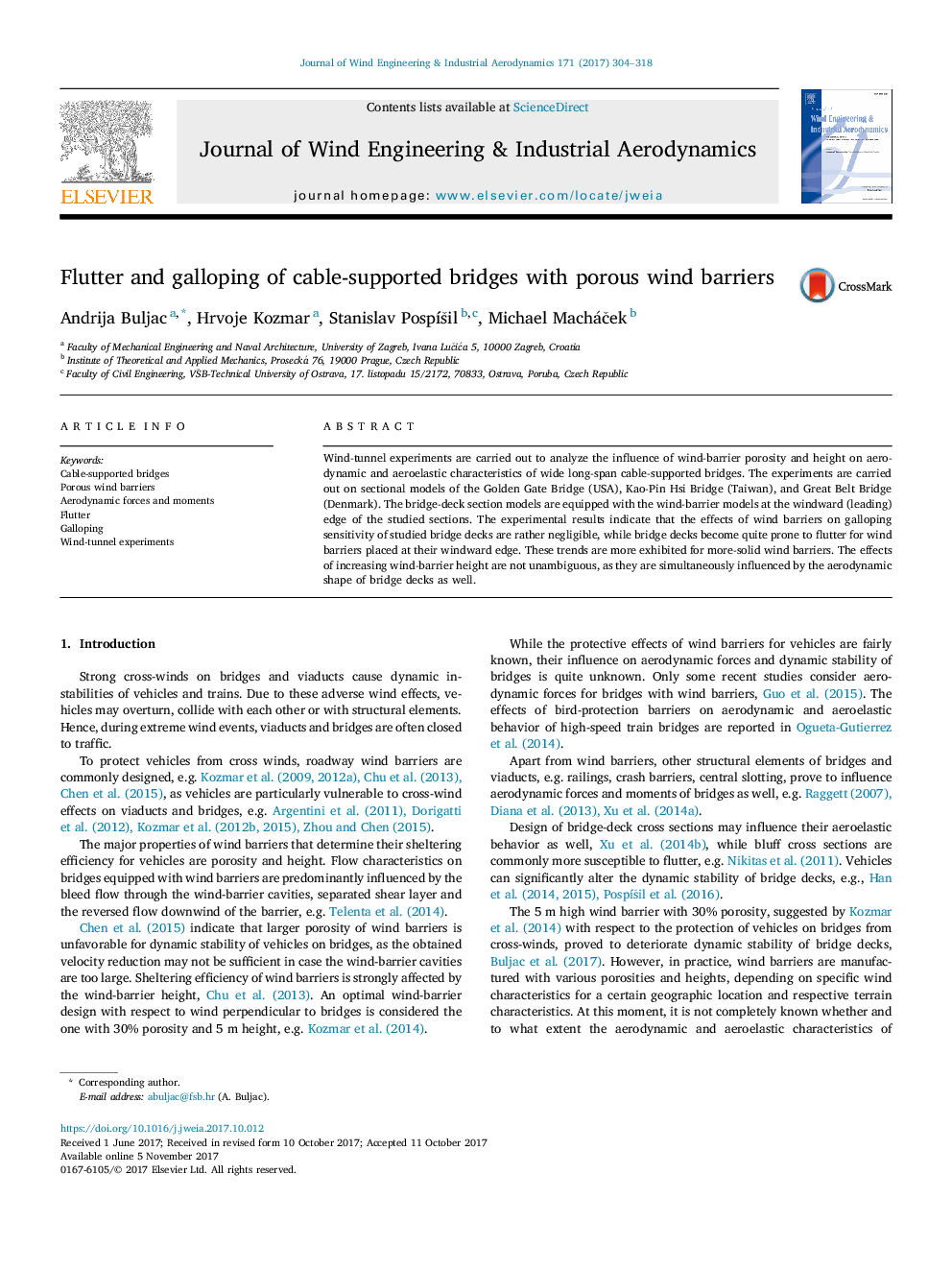| Article ID | Journal | Published Year | Pages | File Type |
|---|---|---|---|---|
| 6757251 | Journal of Wind Engineering and Industrial Aerodynamics | 2017 | 15 Pages |
Abstract
Wind-tunnel experiments are carried out to analyze the influence of wind-barrier porosity and height on aerodynamic and aeroelastic characteristics of wide long-span cable-supported bridges. The experiments are carried out on sectional models of the Golden Gate Bridge (USA), Kao-Pin Hsi Bridge (Taiwan), and Great Belt Bridge (Denmark). The bridge-deck section models are equipped with the wind-barrier models at the windward (leading) edge of the studied sections. The experimental results indicate that the effects of wind barriers on galloping sensitivity of studied bridge decks are rather negligible, while bridge decks become quite prone to flutter for wind barriers placed at their windward edge. These trends are more exhibited for more-solid wind barriers. The effects of increasing wind-barrier height are not unambiguous, as they are simultaneously influenced by the aerodynamic shape of bridge decks as well.
Related Topics
Physical Sciences and Engineering
Energy
Renewable Energy, Sustainability and the Environment
Authors
Andrija Buljac, Hrvoje Kozmar, Stanislav PospÃÅ¡il, Michael MacháÄek,
